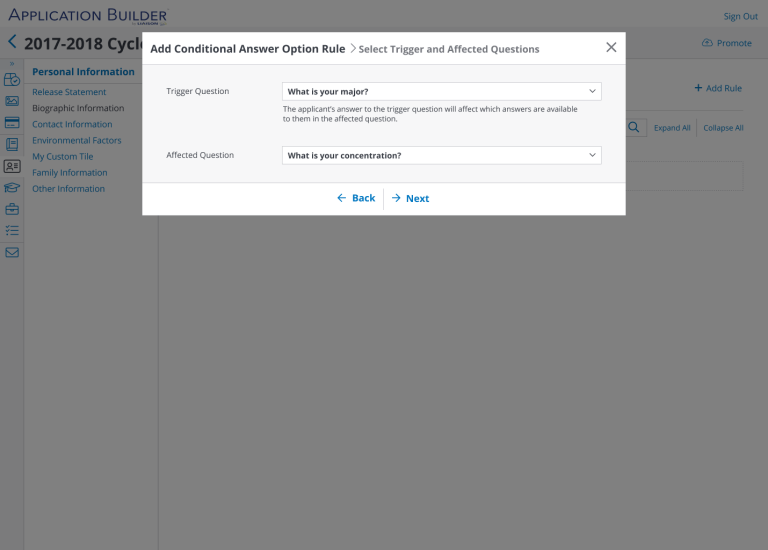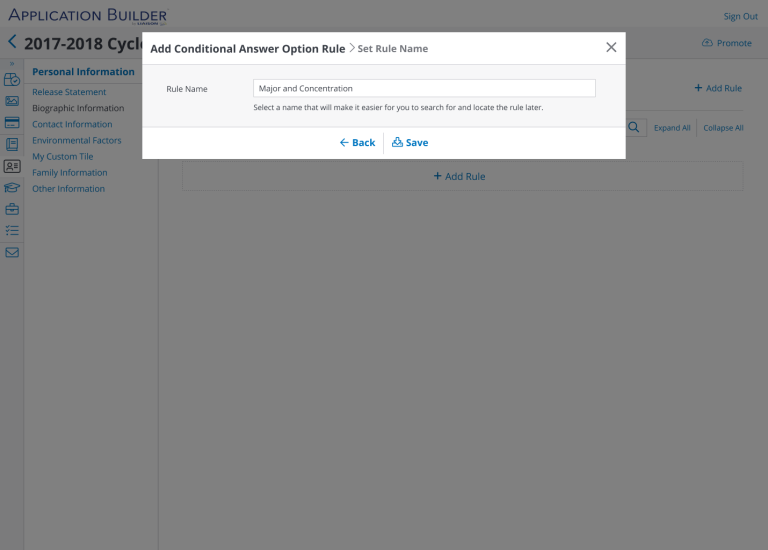I was the designer working with a team of product managers and developers to conceptualize and build a way to configure which answer options appeared based on an applicant’s answers to questions earlier in the application.
Please note: the information displayed in this case study has been significantly altered to adhere to confidentiality agreements.
Preview of the Final Product
The Application Builder tool was a way for our internal employees to manage the setup of college applications on behalf of clients. Using this tool, an implementation manager could configure all parts of an application, including question and answer text, which documents were required of the applicant, various deadlines, etc.
It was determined that a feature was needed that allowed an implementation manager to configure conditions for displaying certain answer options based on an applicant’s answers to questions earlier in the application.
Gathering Requirements
Working with the product manager, we set out to get a better understanding of what this feature needed to do by interviewing the users it was being designed for.
These sessions determined that the implementation managers would need to be able to:
- Select which answers to a specific question would trigger conditional display logic for questions/answers further down in the application
- Select which subsequent questions would be affected by answers to the trigger questions
- Select which answer options would display in the affected questions when certain specific answers were chosen for the Trigger Questions
- Add new conditional question rules
- View and manage existing conditional question rules
Understanding the Typical User
The typical user would be an internal implementation manager who:
- Has a medium-to-high level of technical literacy
- Has a solid understanding of how our applications work for the end-user
- Exclusively uses a Desktop setup to do implementation work
- Communicates with the client (with the assistance of account managers) to determine what needs to be set up for each application
- Is responsible for setting up and troubleshooting applications
Designing the Solution
Since this was a feature that was meant to simplify, not complicate, a potentially confusing process, I set out to find examples from other places and products on the web where conditional logic was configured.
Since I knew that other products out there, such as SurveyMonkey, already had a way of configuring conditional logic, I poked around to see how they handled certain types of scenarios. It became obvious that while these were paradigms that many people were used to, none of them could really be leveraged as-is to satisfy our requirements.
This meant that we had to figure out and design our own workflow that would allow users to configure Question Rules based on how our applications are structured:
Once we agreed on the workflow and figured out what each part of it would need to accommodate, I got to work designing the actual screens:









